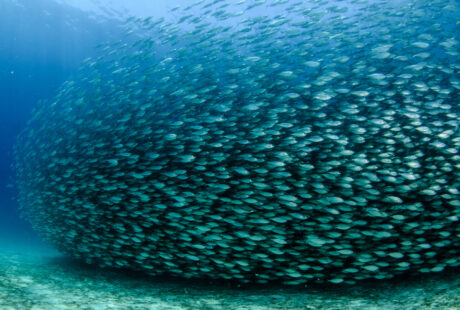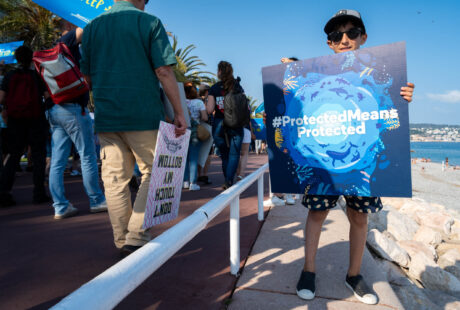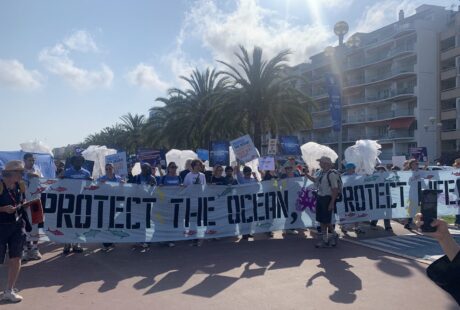As we face both a climate crisis and a biodiversity crisis, the North Sea is coming under increasing pressure. Areas in the Dutch part of the North Sea are rapidly being designated for wind energy in order to meet national and European climate targets. Although protecting areas against bottom-trawling has a proven role in achieving climate goals, actual protection of these areas is slow. This is a missed opportunity, as research shows that protected areas provide economic, ecological and social benefits that more than offset the costs. We urge the rapid and effective implementation of real protection in the North Sea and beyond.
What does protection entail?
The North Sea Foundation sees seabed protection as an essential part of a Marine Protected Area (MPA) because undisturbed seabed in the North Sea is important for biodiversity and natural processes. Recent decades have seen the seabed suffer substantial damage from destructive bottom-trawling fisheries. Studies show that bottom-trawling can strip up to 41% of invertebrate life from the seabed, while recovery can take more than six years. The Foundation thus defines an MPA as an area without bottom-disturbing fishing or other disruptive human activity.
Protected areas enhance biodiversity
Research shows that well-designed MPAs can have a positive effect on the natural values of an area. Limiting human activities in such areas means that nature is given space and rest, allowing natural processes, biodiversity and species that depend on diverse benthic habitats to flourish.
Combating climate change
Seabed protection is an important tool to combat climate change. As the world’s largest carbon sink, disturbance of the seabed (e.g. through bottom-trawling and dredging) releases carbon back into the water, making seawater more acidic and releasing carbon dioxide into the atmosphere.
A recent study shows that global bottom-trawling releases as much carbon as air travel, equivalent to 2.4% of global CO2 emissions, or 918 million tonnes, in 2019. In the Netherlands, an estimated 30 million tonnes of CO2 are emitted annually by bottom-trawling.
Protected areas that limit such activity can therefore be a supporting tool to achieve climate goals. The study found that protecting about 4% of the ocean – mostly within national waters – serves to remove 90% of the current risk of carbon disturbance from bottom-trawling.
Socioeconomic benefits
If properly managed, MPAs can increase the average size of fish and shellfish and improve the health of marine ecosystems in and around the area. A recent study shows that the number of different fish species is more than four times greater (430%) inside MPA boundaries. In terms of total density, 370% more fish were found inside the MPA than in comparable areas where bottom-fishing is still allowed. The study also shows that the number of commercially important fish species outside the protected area increased in the 11-year period after designation. Enhancement of fish stocks can thus provide an economic benefit to the fishing industry.
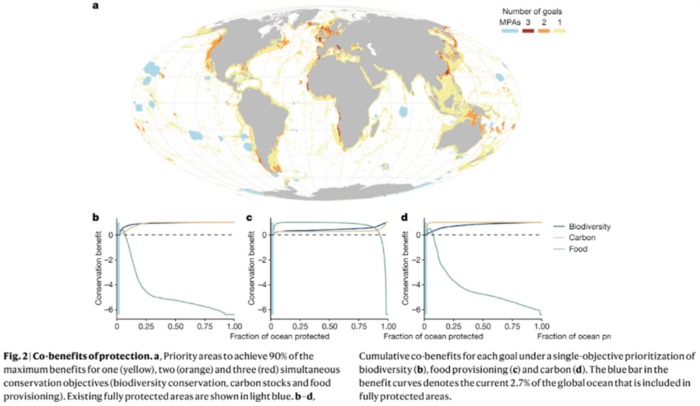
European nature objectives
International policies such as the OSPAR Convention, the Nature Directives (Natura 2000 areas) and the Marine Strategy Framework Directive all include obligations for designating and protecting areas for the ecological network. These instruments aim to achieve a coherent EU-wide network of MPAs that adequately covers the diversity of essential ecosystems. However, the European nature of policy, together with the process of fisheries management, means that designation of such areas does not entail immediate fishing measures. At present, more than 20% of the Dutch North Sea is designated a legally protected MPA but only 0.3% of the bottom is protected in practice.
An analysis of bottom fishing intensity in EU Natura 2000 areas shows that by 2020, more than 2.5 million hours of bottom fishing had taken place within areas intended to protect Europe’s most valuable and endangered marine species and habitats. Two Dutch areas ranked in the top 10. European ambitions in the Biodiversity Strategy and the European Green Deal focus on the conservation of fish stocks and the protection of marine ecosystems, calling for 30% protected areas, of which 10% are strictly protected. These plans are crucial to protecting the sea and restoring biodiversity.
The Dutch North Sea Agreement: a positive step
The Dutch North Sea Agreement was adopted by the House of Representatives in January 2021 and brings us one step closer to providing space for nature in an increasingly crowded North Sea. Under the Agreement, 13.7% of the Dutch North seabed will be protected in 2023, rising to 15% in 2030.
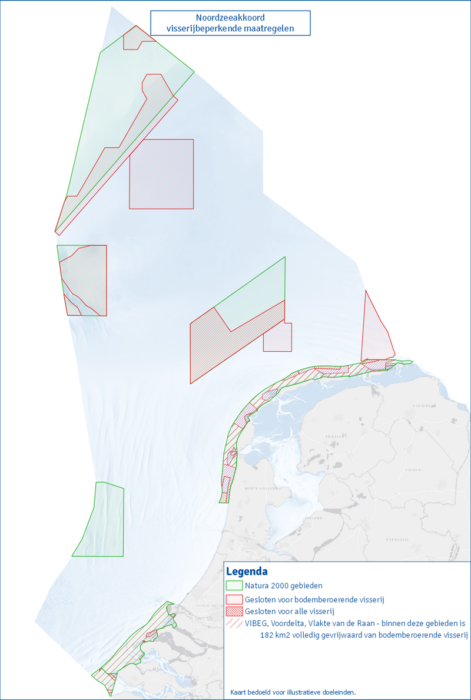
Not only protection, but recovery
Protected areas are needed to maintain and to restore natural values and biodiversity. Marine nature is resilient, and often rest is all that is needed for nature to recover. That recovery may sometimes require a helping hand to realise lost natural values locally or speed up recovery. Alongside (active) restoration, legal measures are necessary to protect and preserve these regained natural values.
The Rich North Sea programme is a good example of such active restoration. It works to restore oyster reefs by exploiting opportunities offered by wind farms for nature recovery, making use of bottom protection, installing artificial reefs, and releasing oysters to accelerate and strengthen nature development.
Our recommendations
- Protected areas are essential to an optimally functioning, healthy and resilient ecosystem in the North Sea. We recommend rapid, effective protection in practice for ecologically important areas.
- Protected areas offer a range of benefits for our climate objectives, food production, nature development and social wellbeing. We recommend continuing to emphasise the importance, effectiveness and value of protected areas, and investing in research on each of these aspects.
- Protected marine areas offer opportunities for passive restoration, while active restoration can give nature a head start. We recommend investigating and investing in opportunities for seabed communities and for active nature restoration.
View videos of the areas and natural values in The Netherlands to be protected here:
Posted on: 29 November 2021

